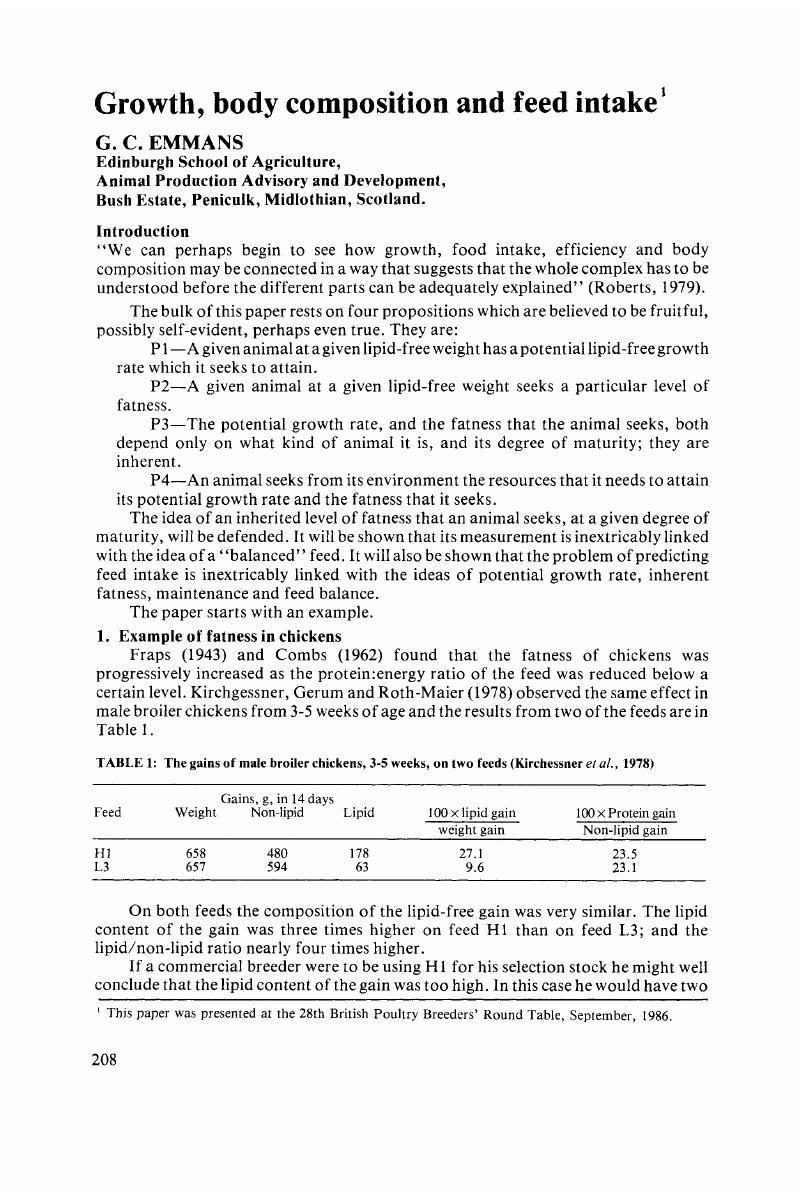Crossref Citations
This article has been cited by the following publications. This list is generated based on data provided by Crossref.
Großkopf, K.
Heide, D.
Flechsig, M.
and
Matthäus, E.
1991.
Mathematical simulation of the broiler production - A tool for model aided control of the process.
IFAC Proceedings Volumes,
Vol. 24,
Issue. 11,
p.
335.
Zoons, J.
Buyse, J.
and
Decuypere, E.
1991.
Mathematical models in broiler raising.
World's Poultry Science Journal,
Vol. 47,
Issue. 3,
p.
243.
Marks, H.L.
1991.
Feed efficiency changes accompanying selection for body weight in chickens and quail.
World's Poultry Science Journal,
Vol. 47,
Issue. 3,
p.
197.
SELL, J.L.
1993.
Influence of Metabolizable Energy Feeding Sequence and Dietary Protein on Performance and Selected Carcass Traits of Tom Turkeys.
Poultry Science,
Vol. 72,
Issue. 3,
p.
521.
Harlow, H.B.
and
Ivey, F.J.
1994.
Accuracy, Precision, and Commercial Benefits of Growth Modelling for Broilers.
Journal of Applied Poultry Research,
Vol. 3,
Issue. 4,
p.
391.
Hruby, Milan
Hamre, Melvin L.
and
Coon, Craig N.
1994.
Growth Modelling as a Tool for Predicting Amino Acid Requirements of Broilers.
Journal of Applied Poultry Research,
Vol. 3,
Issue. 4,
p.
403.
Whittemore, Colin T.
1994.
Causes and Consequences of Change in the Mature Size of the Domestic Pig.
Outlook on Agriculture,
Vol. 23,
Issue. 1,
p.
55.
Hruby, Milan
Hamre, Melvin L.
and
Coon, Craig N.
1995.
Predicting Amino Acid Requirements for Broilers at 21.1°C and 32.2°C.
Journal of Applied Poultry Research,
Vol. 4,
Issue. 4,
p.
395.
Emmans, G.C.
1995.
Problems in modelling the growth of poultry.
World's Poultry Science Journal,
Vol. 51,
Issue. 1,
p.
77.
Raubenheimer, D.
and
Simpson, S. J.
1997.
Integrative models of nutrient balancing: application to insects and vertebrates.
Nutrition Research Reviews,
Vol. 10,
Issue. 1,
p.
151.
Harun, M. A. S.
van Kampen, M.
Veeneklaas, R. J.
Huisman, G. H.
and
Visser, G. H.
1997.
Food restriction and development of thermoregulation in Muscovy ducklings (Cairina moschata).
British Poultry Science,
Vol. 38,
Issue. 4,
p.
381.
Reginatto, MF
Ribeiro, AM
Penz Jr, AM
Kessler, AM
and
Krabbe, EL
2000.
Efeito da Energia, Relação Energia: Proteína e Fase de Crescimento Sobre o Desempenho e Composição de Carcaça de Frangos de Corte.
Revista Brasileira de Ciência Avícola,
Vol. 2,
Issue. 3,
p.
229.
Emmans, Gerry
and
Kyriazakis, Ilias
2001.
Consequences of genetic change in farm animals on food intake and feeding behaviour.
Proceedings of the Nutrition Society,
Vol. 60,
Issue. 1,
p.
115.
Silva, José Humberto Vilar da
Albino, Luiz Fernando Teixeira
and
Nascimento, Adriana Helena do
2001.
Níveis de Energia e Relações Energia: Proteína para Frangos de Corte de 22 a 42 dias de Idade.
Revista Brasileira de Zootecnia,
Vol. 30,
Issue. 6,
p.
1791.
Rondón, EOO
Murakami, AE
and
Sakaguti, ES
2002.
Modelagem Computacional para Produção e Pesquisa em Avicultura.
Revista Brasileira de Ciência Avícola,
Vol. 4,
Issue. 1,
p.
199.
Frost, A.R.
Parsons, D.J.
Stacey, K.F.
Robertson, A.P.
Welch, S.K.
Filmer, D.
and
Fothergill, A.
2003.
Progress towards the development of an integrated management system for broiler chicken production.
Computers and Electronics in Agriculture,
Vol. 39,
Issue. 3,
p.
227.
Wellock, I.J.
Emmans, G.C.
and
Kyriazakis, I.
2003.
Modelling the effects of thermal environment and dietary composition on pig performance: model logic and concepts.
Animal Science,
Vol. 77,
Issue. 2,
p.
255.
Whittemore, Emma C.
Emmans, Gerry C.
and
Kyriazakis, Ilias
2003.
The problem of predicting food intake during the period of adaptation to a new food: a model.
British Journal of Nutrition,
Vol. 89,
Issue. 3,
p.
383.
Scheuermann, GN
Bilgili, SF
Hess, JB
and
Mulvaney, DR
2003.
Breast muscle development in commercial broiler chickens.
Poultry Science,
Vol. 82,
Issue. 10,
p.
1648.
Sakomura, Nilva Kazue
Longo, Flavio Alves
Rabello, Carlos Bôa-Viagem
Watanabe, Kleber
Pelícia, Kleber
and
Freitas, Ednardo Rodrigues
2004.
Efeito do nível de energia metabolizável da dieta no desempenho e metabolismo energético de frangos de corte.
Revista Brasileira de Zootecnia,
Vol. 33,
Issue. 6 suppl 1,
p.
1758.





